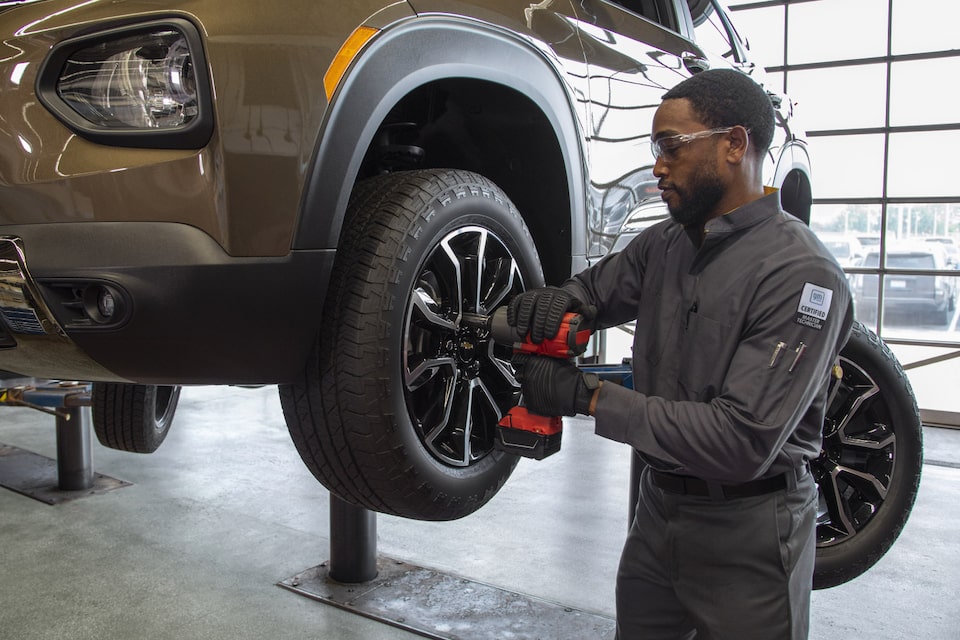Wide Selection of Tires Morris IL: Find the Perfect Fit for Your Vehicle
Wide Selection of Tires Morris IL: Find the Perfect Fit for Your Vehicle
Blog Article
Tire Service: The Influence of Weather Condition Problems
When it involves making sure optimum performance and safety on the roadway, understanding the influence of weather conditions on tire solution is important. From scorching heat to icy roads, each weather condition element can dramatically influence tire performance and general driving experience. By delving right into the effects of differing weather problems on tires, drivers can acquire useful understandings that might boost their car's performance and long life. In this conversation, we will certainly check out the complex connection between climate condition and tire service, losing light on the significance of weather-specific tire maintenance techniques and considerations.
Warmth and Tire Performance
When subjected to heats, tires experience modifications in performance that can considerably influence car safety and security and handling. The warmth generated from prolonged driving or heat conditions causes the tire rubber to soften, bring about lowered walk life and increased wear. As the rubber comes to be softer, the tire's hold when driving reduces, impacting braking distances and total traction. In severe situations, excessive heat can even trigger tire blowouts, presenting an extreme safety threat to the automobile and its residents.
Moreover, high temperatures can increase the process of tire aging, triggering the rubber to degrade much more quickly. To alleviate the results of heat on tire performance, chauffeurs should frequently examine their tire stress, rotate tires to guarantee also wear, and examine for any type of indicators of damages.
Cold Climate Effects
Winter problems can have a substantial influence on tire efficiency and security. As temperature levels decline, tire rubber can set, leading to decreased grip on icy or snow-covered roadways. In cool climate, tires might additionally lose air stress a lot more swiftly, which can impact managing and gas effectiveness. Furthermore, cold temperatures can trigger tire sidewalls to stiffen, boosting the threat of damages from craters or other road threats.
To alleviate the impacts of cold weather condition on tires, it is important to regularly check tire stress and inflate them to the producer's advised degrees. Using winter months or all-season tires created for winter problems can also enhance traction and grasp on icy or snowy roads - tires morris il. Appropriate tire upkeep, including routine examinations for wear and damages, ends up being even a lot more vital during chillier months to ensure optimum performance and safety and security
Rainy Conditions Effect
Tires with damaged footsteps are a lot more vulnerable to hydroplaning, where a layer of water develops up between the road and the tire surface, leading to loss of grip. To battle this, chauffeurs should routinely inspect their tires for appropriate step depth and take into consideration spending in tires specifically made for damp problems.

Snow and Tire Security
When driving in snowy problems, having the appropriate tires can make a significant distinction in safety and security and performance. Winter season tires are created with unique rubber compounds and walk patterns to give far better traction on snow and ice compared to all-season tires.
Along with utilizing winter months tires, it is crucial to ensure they are correctly pumped up. Winter can create tire pressure to drop, affecting traction and handling (tires morris il). Frequently examining and preserving the right tire stress is necessary for ideal performance in snowy conditions

Weather-Related Tire Upkeep
When confronted with numerous weather, proper tire upkeep becomes a critical element of vehicle security and efficiency. Weather-related tire upkeep includes an array of practices intended at making sure optimal tire feature and longevity in different weather condition situations. One key element of weather-related tire upkeep is tire pressure regulation. Changing temperature levels can cause tire pressure to differ, affecting traction and gas performance. Frequently changing and inspecting tire stress according to supplier recommendations is essential visit this site for risk-free driving in transforming weather. Additionally, tire tread depth plays a considerable duty in handling different weather elements. Tires with sufficient walk deepness provide better grasp on wet or icy roads, reducing the threat of skidding or hydroplaning. Inspecting tire walk consistently and changing tires when step wear gets to a specific deepness is essential for keeping grip and security in negative weather condition. By prioritizing weather-related tire maintenance, drivers can enhance safety and security, enhance car performance, and extend the lifespan of their tires.
Final Thought
In verdict, weather condition problems have a significant influence on tire performance and security (morris tire and alignment). From warm influencing tire stress and use to cool weather minimizing traction, it is essential to think about the climate when keeping and using tires.
In this discussion, we will certainly check out the intricate relationship between weather condition problems and tire service, dropping light on the importance of weather-specific tire maintenance practices and considerations.

Report this page